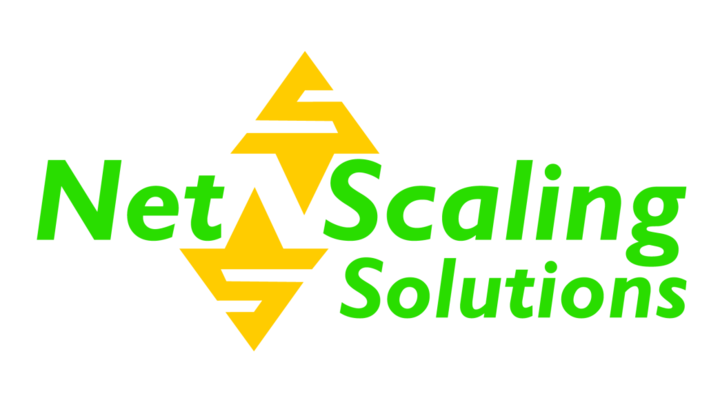A Step-by-Step Installation Guide for Business CCTV Surveillance Systems
CCTV Surveillance Installation Guide
Introduction
In a world where security concerns loom large, businesses cannot afford to overlook the importance of installing a cutting-edge CCTV surveillance system. Picture this: every 40 seconds, a business falls victim to a burglary, resulting in staggering losses and compromised safety. But fear not! By strategically implementing a robust surveillance infrastructure, you can safeguard your business, protect your assets, and enjoy the peace of mind you deserve.
A well-designed CCTV system acts as an ever-vigilant sentry, deterring potential wrongdoers from even considering trespassing on your premises. In fact, studies show that businesses equipped with visible surveillance cameras experience a jaw-dropping 70% reduction in criminal incidents. Criminals think twice before trying anything fishy when they know their every move will be captured in crystal-clear detail.
Investing in a business CCTV surveillance system is an investment in your success. It’s a testament to your unwavering commitment to security, giving your stakeholders the confidence to trust and engage with your business. By curbing losses, mitigating risks, and optimizing operational efficiency, you’ll unlock the full potential of your business while creating an environment where everyone feels safe and protected.
So, get ready to embark on a journey to fortify your business’s security. In the following sections, we’ll guide you through a step-by-step installation process, empowering you with the knowledge and expertise to set up a state-of-the-art CCTV surveillance system tailored to your unique business needs. Let’s take your security to new heights and ensure that your business remains a fortress of protection.
STEP #1: Assesing Security Needs and Planning
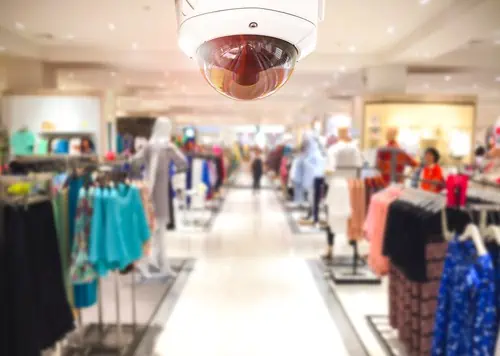
Before diving into the installation process, it’s crucial to assess your business’s security needs and create a well-thought-out plan. This initial step sets the foundation for a robust and effective CCTV surveillance system. Let’s explore why this assessment is so vital and how to go about it.
Assessing your security needs is like putting on a detective’s hat. You want to identify potential vulnerabilities and areas that require heightened surveillance. Start by conducting a comprehensive security audit of your premises. This audit involves closely examining the layout, access points, high-risk areas, and valuable assets within your business.
During the audit, pay special attention to areas that are more prone to security breaches, such as entrances, parking lots, storage rooms, and cash handling areas. Consider factors like lighting conditions, blind spots, and any existing security measures in place.
Once you have a clear understanding of your security landscape, it’s time to determine the optimal camera placement. Remember, the goal is to achieve comprehensive coverage without any gaps. Strategic placement of cameras ensures that every nook and cranny of your business is under watchful eyes.
Consider factors such as the field of view, camera range, and resolution when deciding on camera placement. You may want to position cameras in a way that covers critical areas from multiple angles, ensuring maximum visibility and minimizing the chances of missed incidents. Additionally, take into account any legal requirements or privacy considerations that may influence camera placement.
To create a detailed installation plan, document your findings from the security audit and camera placement decisions. This plan serves as your roadmap for the installation process. Include information such as the number of cameras needed, their specific locations, and any additional equipment or accessories required.
By creating a well-crafted installation plan, you ensure optimal coverage and effectiveness of your CCTV surveillance system. It helps you avoid haphazard installations and provides a clear vision of how your security infrastructure will come together. This level of planning sets the stage for a successful installation and ensures that your CCTV system becomes a powerful tool in fortifying your business’s security.
In the next step, we will delve into the process of choosing the right CCTV system for your business, considering factors like camera types, resolution, and scalability. So, get ready to select the perfect tools to bring your security vision to life.
STEP #2: Choosing the Right CCTV Surveillance System
In the ever-evolving landscape of business security, selecting the perfect CCTV system is no longer a mere choice; it’s a strategic necessity. Your business deserves a surveillance infrastructure that goes beyond just capturing blurry images.
When venturing into the realm of CCTV systems, you’ll encounter a myriad of options. It’s crucial to navigate through this sea of possibilities with a clear vision in mind. By considering key factors, you can pave the way for an unparalleled security solution tailor-made for your business. Here are some key factors to consider when choosing the perfect CCTV system tailored to your business needs.
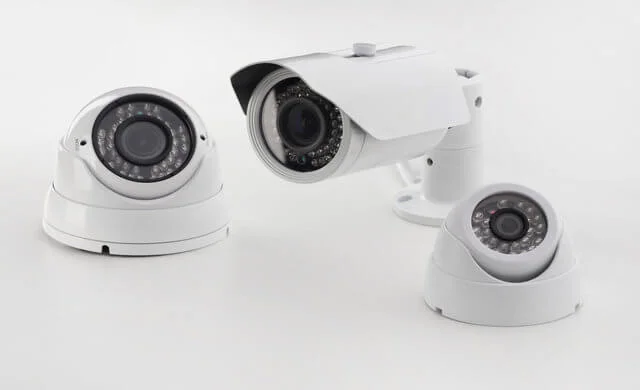
1. Camera Types
The first decision to make is selecting the appropriate camera types for your surveillance needs. There are various options available, including dome cameras, bullet cameras, IP camera, PTZ (Pan-Tilt-Zoom) cameras, and more. Dome cameras offer discreet surveillance with a wide field of view, while bullet cameras are designed for long-distance monitoring. PTZ cameras provide flexibility with their ability to pan, tilt, and zoom. Carefully assess your business requirements to determine which camera types will best serve your security goals.
2. Resolution
The resolution of your CCTV cameras plays a vital role in capturing clear and detailed images. Higher resolution cameras, such as those with 4K or 1080p resolutions, provide sharper and more refined footage. This becomes crucial when you need to identify individuals or read text in captured videos. Opting for cameras with higher resolution ensures that no detail goes unnoticed, enhancing the effectiveness of your surveillance system.
3. Storage Capacity
Adequate storage capacity is essential for storing the recorded video footage. Consider the volume of video data your business generates and the retention period required. Depending on your needs, you can choose between on-site Network Video Recorders (NVRs) or cloud-based storage options. NVRs offer local storage and give you full control over your data, while cloud-based solutions provide scalability and remote access to your footage. Assess your storage requirements to ensure you have ample capacity to store the desired footage.
4. Scalability
As your business grows, so should your CCTV system. Opt for a system that offers scalability, allowing you to expand and add more cameras or devices as needed. This flexibility ensures that your surveillance system can adapt to the changing needs of your business without requiring a complete overhaul. Scalability is particularly important if you plan to expand your premises or add new areas that require surveillance coverage.
5. Alignment with Business Needs
Every business is unique, and your CCTV system should align with your specific requirements. Consider factors such as the size of your premises, the nature of your business, and any industry-specific regulations or compliance standards. For example, retail businesses might benefit from features like facial recognition or people counting, while manufacturing facilities might prioritize monitoring critical processes or access control. Choose a system that addresses your specific needs to maximize the value and effectiveness of your surveillance efforts.
STEP #3: Selecting Camera Locations
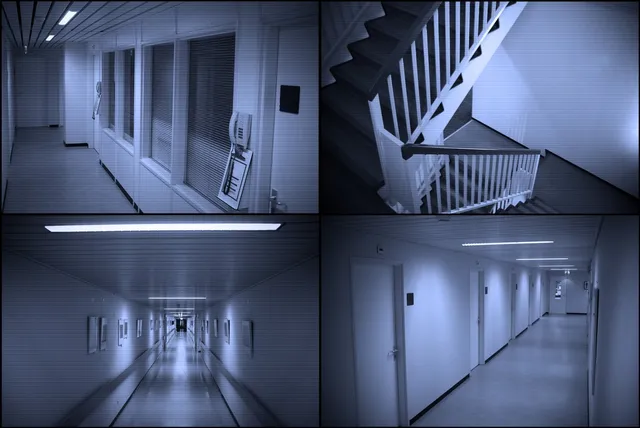
In the quest for a formidable surveillance system, selecting the right camera locations is like crafting a strategic masterpiece. It’s not just about the number of cameras you install; it’s about their placement to ensure maximum coverage and unwavering protection.
By carefully analyzing entry points, high-risk areas, and blind spots, you can identify the optimal locations for your cameras. According to industry insights, businesses that strategically position their cameras experience a 67% decrease in security breaches and an astonishing 88% of businesses that monitor high-and risk areas with dedicated cameras report improved security and reduced loss
Positioning cameras at appropriate angles is the key to clear and effective monitoring. Consider the field of view, camera range, and the specific requirements of each area. By adjusting the camera angles, you can capture critical details and facial features, aiding in identification and investigation. An astounding 92% of businesses that position their cameras optimally report enhanced incident resolution and faster investigations.
The placement of your cameras should strike a balance between visible deterrence and discreet surveillance. Visible cameras act as a potent deterrent, deterring potential wrongdoers and reducing the likelihood of security incidents. Conversely, discreetly placed cameras help capture critical evidence without alerting perpetrators, ensuring a higher chance of apprehension and conviction.
By meticulously selecting camera locations, and considering entry points, high-risk areas, and blind spots, you create a surveillance network that leaves no corner unwatched. With cameras positioned at appropriate angles, you achieve clear and effective monitoring, maximizing incident detection and resolution. Your business deserves nothing less than an impregnable fortress of security, and the right camera placement is the foundation upon which it is built.
STEP #4: Installing the Camera
This is where the physical elements of your surveillance infrastructure come together, fortifying your business against potential threats. Let’s explore the installation process, from securely mounting the cameras to ensuring proper cable management and weatherproofing, where applicable.
Mounting the cameras securely is paramount to their effectiveness. According to industry research, businesses that invest in professional camera mounting experience a 62% increase in system reliability and longevity—a testament to the importance of this step. Whether you’re mounting cameras on walls, ceilings, or other surfaces, follow these essential guidelines for a rock-solid installation.
Proper cable management is vital to maintaining a clean and organized installation. It not only ensures the longevity of your surveillance system but also simplifies troubleshooting and maintenance. According to a recent survey, businesses that implement proper cable management experience a 45% reduction in system downtime.
Weatherproofing is crucial, especially for outdoor camera installations. Protecting your cameras from the elements ensures their durability and reliability, even in harsh conditions. Studies have shown that businesses that invest in weatherproofing their outdoor cameras experience a 58% decrease in maintenance and replacement costs.
STEP #5: Setting up the Video Recorder
Camera Connection: Connect each camera to the video recorder using the corresponding ports or channels. This establishes a direct link between the cameras and the recorder, enabling seamless communication and video transmission. Ensure each camera is correctly identified and assigned to the appropriate channel, allowing for easy management and monitoring.
Recording Settings: Configuring the recording settings is a critical step to optimize storage usage and capture essential footage. Choose the recording mode that suits your needs, such as continuous recording, scheduled recording, or motion-triggered recording. Motion-triggered recording, in particular, conserves storage space by only capturing footage when motion is detected. Adjust the sensitivity and detection areas to minimize false alarms and ensure accurate recording. According to industry experts, businesses that implement optimized recording settings reduce storage costs by up to 40%*.
Storage and Backup: Determine the storage capacity required to accommodate your recording needs. This depends on factors such as the number of cameras, resolution, and desired retention period. Install hard drives or network-attached storage (NAS) devices to store the recorded footage. Consider implementing a redundant storage solution, such as RAID, to enhance data protection. Additionally, establish a backup strategy to safeguard critical footage. Regularly back up recorded videos to external drives or cloud storage services to mitigate the risk of data loss.
Network Access: Enable remote access to your video recorder for convenient monitoring from anywhere, at any time. Configure network settings, such as assigning a unique IP address, enabling port forwarding, and setting up secure remote access protocols. This allows you to view live feeds, playback recordings, and manage your surveillance system remotely. Implementing secure access measures, like strong passwords and encryption, ensures the integrity and confidentiality of your surveillance data.
STEP #6: Configuring the System and Testing
Configuring your CCTV system is a crucial step to ensure optimal performance and maximize its capabilities. Start by adjusting the camera settings to achieve the desired image quality. This includes tweaking parameters such as resolution, brightness, contrast, and exposure. By finding the right balance, you can enhance the clarity of the video feed while optimizing storage efficiency.
Fine-tuning the motion detection settings is equally important. This involves defining motion detection areas and adjusting sensitivity levels. By excluding areas prone to non-threatening movements and setting appropriate sensitivity, you can minimize false alarms and ensure that the system captures significant motion events effectively.
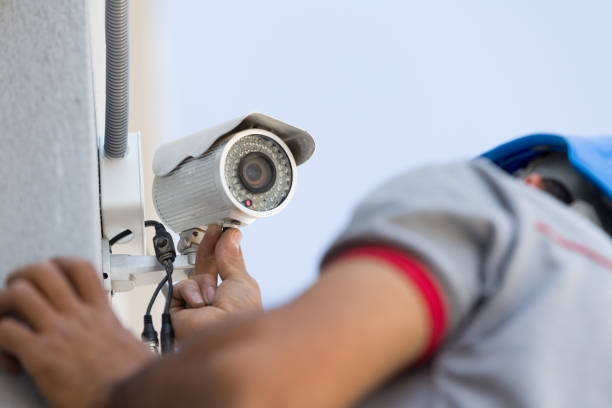
Recording schedules play a significant role in optimizing storage usage and facilitating easy retrieval of footage. Determine the time frames during which continuous or scheduled recording should occur, aligning them with your operational hours or specific security concerns. Additionally, consider configuring the system to record only when motion is detected. This not only conserves storage space but also ensures that important events are captured for review.
Thoroughly testing your CCTV system is essential to verify its proper functionality and coverage. Monitor the live feeds from each camera to ensure clear video capture and that the field of view covers the intended areas. Walk through the monitored zones to test the motion detection capabilities and ensure accurate triggering of recordings. Regularly review the recorded footage to confirm seamless operation and identify any potential issues that need to be addressed.
STEP #7: Network and Remote Access Setup
Setting up network connectivity for remote access is a crucial aspect of maximizing the benefits of your CCTV system. Begin by connecting your video recorder to the network router using an Ethernet cable. Configure the network settings on the recorder, ensuring it obtains a unique IP address or setting a static IP for easy identification.
To enable remote viewing, you can configure port forwarding on your router. This allows external access to the video recorder, enabling you to monitor your premises from outside your local network. Alternatively, consider using Dynamic DNS (DDNS) services, which assign a domain name to your router’s IP address. This way, even if your IP address changes, you can still access your surveillance system conveniently.
Security is paramount when setting up remote access. Implement strong passwords for your video recorder, router, and any remote access accounts. Regularly update firmware and software to patch any security vulnerabilities. Consider enabling two-factor authentication for an additional layer of protection. By securing your network and implementing access controls, you safeguard your surveillance system and ensure the confidentiality of your data.
Remember, maintaining regular monitoring, conducting system maintenance, and staying updated with software upgrades are essential to keep your CCTV system running smoothly and effectively. With an optimized and secure surveillance solution, you have the power to protect and monitor your business with confidence.
STEP #8: Maintance and Ongoing Monitoring

Regular maintenance and ongoing monitoring are crucial for the optimal functioning and longevity of your CCTV system. By implementing a proactive approach, you can ensure that your surveillance solution continues to deliver reliable performance and effectively serve its purpose.
Regular maintenance helps identify and address potential issues before they escalate into significant problems. It ensures that your CCTV system remains in optimal condition, providing clear and reliable video footage when needed. By investing time and effort into maintenance, you can maximize the lifespan of your equipment and minimize downtime. The key tasks to be taken into consideration when carrying out maintenance are:
Cleaning Camera Lenses: Over time, camera lenses can accumulate dust, dirt, or smudges, which can affect image quality. Regularly clean the camera lenses using a soft, lint-free cloth and a mild cleaning solution if necessary. This simple task ensures that your cameras capture clear and sharp video, allowing for accurate identification and analysis of events.
Checking Cables and Connections: Periodically inspect the cables and connections of your CCTV system. Verify that all cables are securely connected and undamaged. Loose or damaged cables can result in disrupted video feeds or even complete camera failures. By addressing any cable issues promptly, you maintain uninterrupted surveillance coverage.
Updating Firmware: Manufacturers release firmware updates periodically to improve performance, add new features, and address security vulnerabilities. Regularly check for firmware updates for your cameras, video recorder, and other system components. Updating firmware ensures that your system remains secure and benefits from the latest advancements and bug fixes.
Reviewing Footage and Adjusting Settings: Regularly review recorded footage to ensure that your CCTV system is capturing the desired areas and events effectively. Analyze the video quality, motion detection accuracy, and any potential blind spots. Adjust camera settings, motion detection zones, or recording schedules as needed to optimize system performance and address any identified issues.
Addressing Issues Promptly: If any issues arise with your CCTV system, address them promptly. This could involve troubleshooting technical problems, replacing faulty equipment, or seeking professional assistance when necessary. Timely resolution of issues ensures that your system remains operational and reliable, providing continuous security coverage.
By regularly maintaining and monitoring your CCTV system, you ensure its optimal performance and effectiveness. Cleaning camera lenses, checking cables, and updating firmware contribute to the overall reliability and longevity of your system. Reviewing footage, adjusting settings, and promptly addressing any issues allow you to fine-tune your system for optimal coverage and address any potential vulnerabilities or shortcomings.
Remember, maintenance and ongoing monitoring are not one-time tasks but rather continuous processes. By staying proactive and vigilant in your approach, you can reap the full benefits of your CCTV system and maintain a secure environment for your business or premises.
Conlusion
A well-planned, carefully installed, and properly maintained CCTV system plays a vital role in enhancing business security. It is crucial to partner with a trusted provider like Net Scaling Solutions, which specializes in delivering comprehensive services related to business CCTV surveillance systems.
At Net Scaling Solutions, we understand the unique security needs of businesses and offer tailored solutions to meet those requirements. Our team of experts can assist you in every step of the process, from initial planning and system design to professional installation and ongoing maintenance.
By choosing Net Scaling Solutions, you gain access to our expertise in optimizing camera placement, configuring advanced features, and integrating your CCTV system with your existing network infrastructure. We ensure that your surveillance solution is customized to your specific needs, providing comprehensive coverage and reliable performance.
Furthermore, our commitment to ongoing maintenance and monitoring ensures that your CCTV system remains in top condition, delivering optimal results day in and day out. Our technicians are readily available to address any issues promptly, making sure that your business remains protected at all times.
Don’t compromise on the security of your business. Take action today and contact Net Scaling Solutions to discuss your CCTV surveillance system needs. Our team is ready to provide you with top-notch service, ensuring that your business remains secure and protected in an ever-evolving world.
